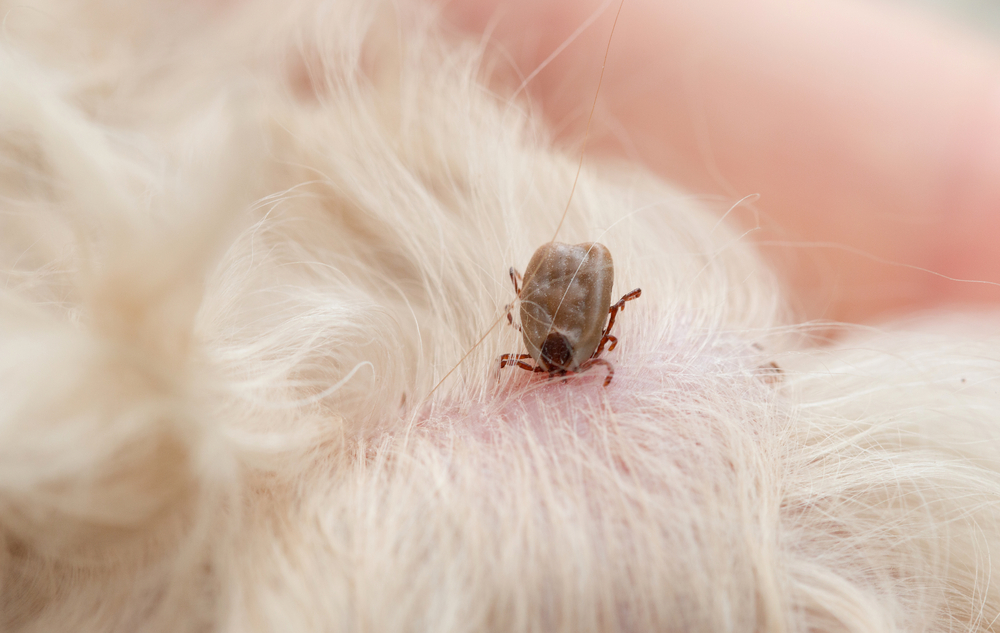You and your pet are warm weather fans and spend as much time outdoors as you can when the mercury starts to rise. Mosquitoes and ticks also prefer the warmer conditions, and find your pet perfect for a quick meal. When these parasites latch onto your pet, they can leave behind unwanted reminders of their presence. The team at Star of Texas Veterinary Hospital wants you to know about the diseases these parasites carry—heartworm disease, Lyme disease, ehrlichiosis, and anaplasmosis.
How mosquitoes impact your pet
When an infected mosquito bites your pet, they release heartworm larvae into your pet’s bloodstream, which travel to your pet’s heart, where they take up residence. Dogs are natural heartworm hosts, meaning they can fulfill their entire life cycle in your dog’s heart. Since the worms can breed in your dog’s heart, your pet may harbor many worms, which can grow to a foot long, and cause extensive damage to your dog’s heart, lungs, and arteries. In cats, most heartworms cannot survive to the adult stage, but the worms can cause significant damage in the form of heartworm associated respiratory disease (HARD).
Heartworm disease signs in pets
In the initial stages, your pet may not exhibit any signs, but active or heavily infected pets show more pronounced signs, including coughing, exercise intolerance, decreased appetite, and weight loss.
Heartworm disease diagnosis in dogs and cats
Two heartworm tests are available. The antigen test screens your pet’s blood for proteins produced by the adult female heartworm. These tests are used annually to screen dogs for infection. Antibody tests detect antibodies produced when your pet is exposed to heartworm larvae. Cats typically require the antibody and antigen tests and may also need an X-ray or ultrasound to confirm diagnosis.
Heartworm disease treatment in dogs and cats
Any dog diagnosed with heartworm disease must be severely exercise-restricted and kept as quiet and calm as possible. Physical exertion can exacerbate the heartworms’ damage to their heart and lungs, and could result in sudden death. Your dog will first need stabilization through supportive therapy. Our veterinarians will then decide on the best treatment protocol, and your dog’s progress will be constantly monitored closely. Treatment takes at least 60 days. Unfortunately, no treatment protocols are approved for cats, but by stabilizing their condition and monitoring them closely, many cats can be managed long-term.
Heartworm disease prevention in dogs and cats
Heartworm preventives are available as chewable pills, topical applications, and injectables. Your pet should be kept on a year-round regimen to prevent heartworm infection. Our team at Star of Texas Veterinary Hospital will help you determine the best option for your pet.
How ticks impact your pet
Ticks carry many illnesses that can severely affect your pet’s quality of life. Dogs are much more commonly affected by these diseases than cats. Ticks can cause:
- Lyme disease — Lyme disease is caused by the bacterium Borrelia burgdorferi and transmitted by deer ticks.
- Ehrlichiosis — The bacterium Ehrlichia canis, which is transmitted by the lone star tick, brown dog tick, and black-legged tick, causes ehrlichiosis.
- Anaplasmosis — Anaplasmosis is caused by the bacterium Anaplasma phagocytophilum and transmitted by the deer tick and the black-legged tick.
Lyme disease, ehrlichiosis, and anaplasmosis signs in pets
Tick-borne illnesses typically cause similar signs, including fever, loss of appetite, joint swelling, lethargy, and lameness, which may shift from one limb to another. Anaplasmosis may also cause issues associated with bleeding, such as bloody nose, bloody feces, or bruising.
Lyme disease, ehrlichiosis, and anaplasmosis diagnosis in cats and dogs
Since tick-borne illnesses exhibit similar signs, definitive diagnosis can be difficult. Blood tests can determine if your pet has been exposed, but not all pets who have been exposed are sick. Diagnosis is based on your pet’s signs, a positive blood test, and response to appropriate treatment.
Lyme disease, ehrlichiosis, and anaplasmosis treatment in cats and dogs
A certain antibiotic class treats tick-borne illnesses. Your pet will likely be placed on a treatment regimen for at least four weeks.
Lyme disease, ehrlichiosis, and anaplasmosis prevention in dogs and cats

You should check your pet thoroughly after they spend time outdoors, and promptly remove any ticks on their body. Your pet should be placed on a year-round flea and tick prevention protocol. An approved Lyme disease vaccine is available for dogs. Our veterinary team will be glad to discuss whether this vaccine is appropriate for your dog.
Placing your pet on year-round heartworm and flea and tick prevention programs can go a long way toward protecting them against some serious diseases. Many prevention methods are available, and keeping your pet covered is easy and affordable. If you would like to discuss the best preventives for your pet, or if you have questions about these concerning diseases, contact the Fear Free team at Star of Texas Veterinary Clinic.






